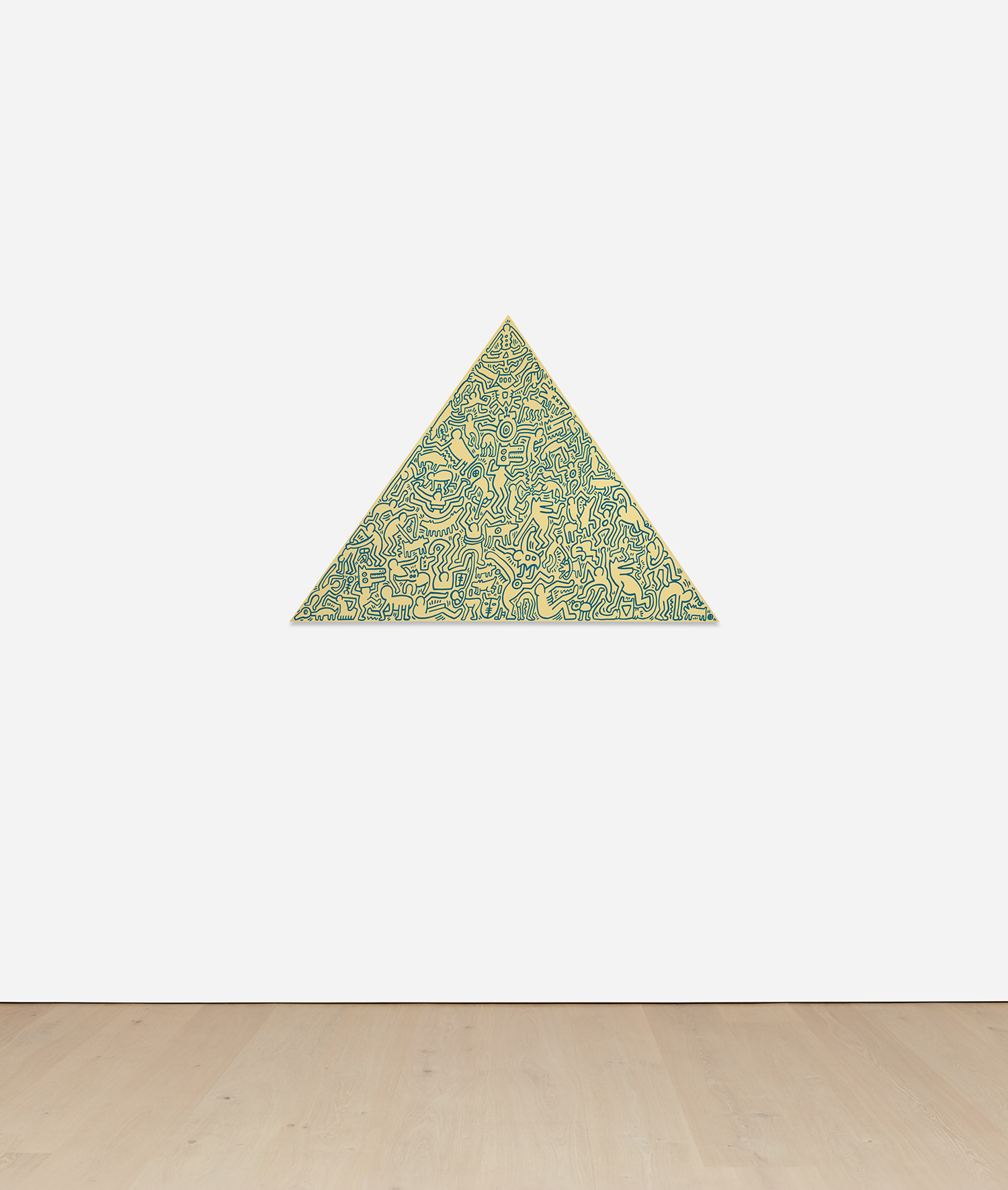



Works from the Archive of Edition Schellmann to benefit the Ars Publicata Project
31
Keith Haring
Pyramid
1989
Anodized aluminium plate in yellow and blue.
103 x 145.4 cm (40 1/2 x 57 1/4 in.)
Incised with signature, date and numbering 7/30 on the reverse (there were also 6 artist's proofs), published by Edition Schellmann, Munich and New York.
Further Details
Full-Cataloguing
Keith Haring
American | B. 1958 D. 1990Haring's art and life typified youthful exuberance and fearlessness. While seemingly playful and transparent, Haring dealt with weighty subjects such as death, sex and war, enabling subtle and multiple interpretations.
Throughout his tragically brief career, Haring refined a visual language of symbols, which he called icons, the origins of which began with his trademark linear style scrawled in white chalk on the black unused advertising spaces in subway stations. Haring developed and disseminated these icons far and wide, in his vibrant and dynamic style, from public murals and paintings to t-shirts and Swatch watches. His art bridged high and low, erasing the distinctions between rarefied art, political activism and popular culture.